Grand Forks Herald –
Grand Sky has created the first and largest unmanned airspace in the country.
The company partnered with Harris Corp. to perform the country’s first and largest unmanned aerial system airspace to support beyond visual line of sight flight.
The corridor stretches 100 miles, from Grand Forks to just south of Hillsboro, N.D.
Flying in a BVLOS corridor has applications in precision farming, oil and gas, infrastructure inspection and package deliveries.
Pilots in a trailer at Grand Sky will eventually be able to fly the entire Red River Valley.
“Pilots could monitor the Red River as it is flooding and cresting,” Swoyer said. “We’d be able to map and get visual imagery of the river, track ice jams or see where the water is backing up.”
Swoyer said the BVLOS corridor could also be used to inspect pipelines and roads.
“And that will decrease the cost to farmers and pipeline owners because we’re increasing the area and it would improve asset utilization,” Swoyer said.
Swoyer said it was important this flight happen now because the North Dakota Legislature is working on a bill for funding a statewide BVLOS network.
Grand Sky is working to build a corridor along the entire Red River Valley, from South Dakota to Canada. Swoyer said he hopes to accomplish this by 2020.
A statewide system will take longer than that, he said, but continued work on the current corridor will inform them on building the bigger system.
“The lessons we’re going to learn will certainly accelerate adoption and integration of a statewide system,” Swoyer said.
How it works
The system uses two long-range primary radars that can detect non-cooperative aircraft, one on Grand Forks Air Force Base and the other in Hillsboro.
Swoyer said Grand Sky has its own BVLOS system that helps companies like Northrop Grumman and General Atomics get larger aircraft into the air.
There has been significant growth in small- and medium-sized aircraft in the industry, Swoyer said, but their existing system is not optimal for seeing these smaller drones.
Harris suggested bringing HubNet into the system. HubNet provides command and control radios in additional to air surveillance capabilities, Swoyer said.
Harris has been working with UND under a Research North Dakota Grant.
“We are basically taking two systems and merging them together to create an operating environment that is bigger than anywhere else in the US and offers more opportunities for companies to come to North Dakota and test their aircraft and their systems,” Swoyer said.
The HubNet and Grand Sky’s current radars display on two different screens.
“BVLOS displays on one monitor and HubNet displays on a different monitor; the two are not tied yet,” Swoyer said. “And it seems like it should be easy; just put them both on the same monitor, but it doesn’t quite work that way. The FAA wants the systems to look and operate as if its one.”
This is the next and possibly most important step, Swoyer said.
“Bringing all these different radars together into a uniform picture is a really important step for us to take,” Swoyer said. “These two systems are a really powerful, really useful tool for us to build that capability.”

